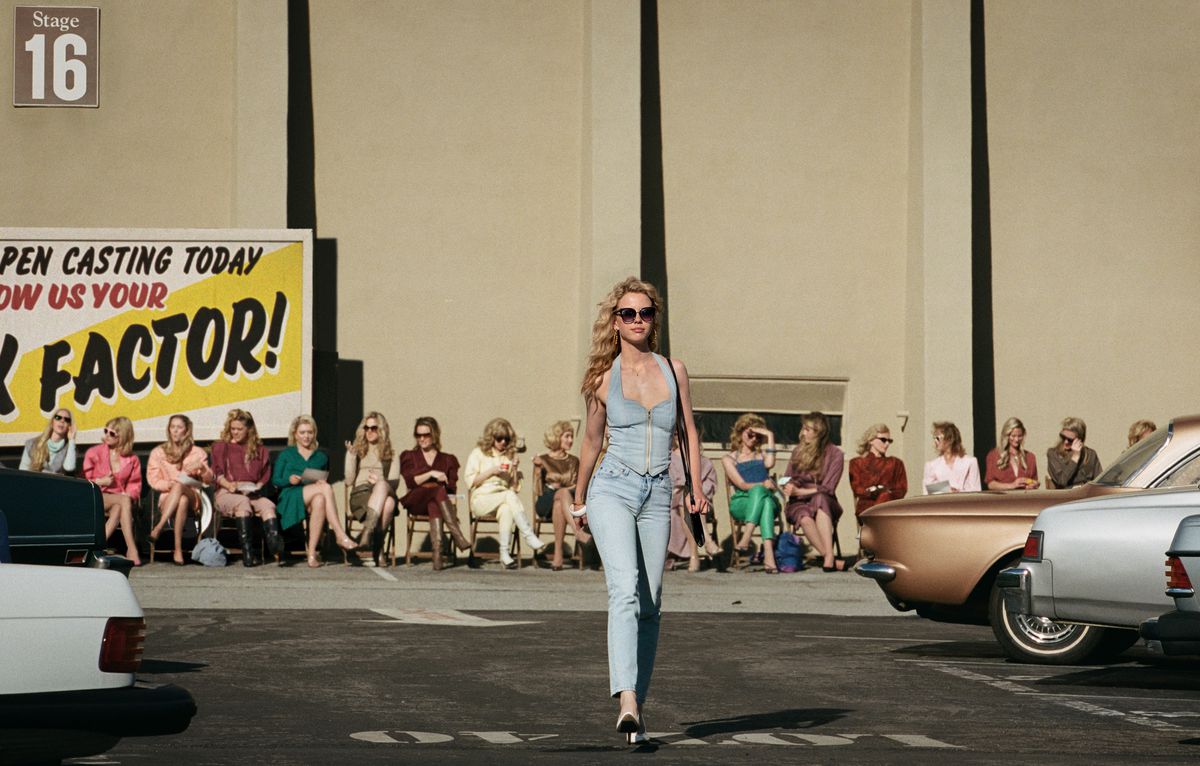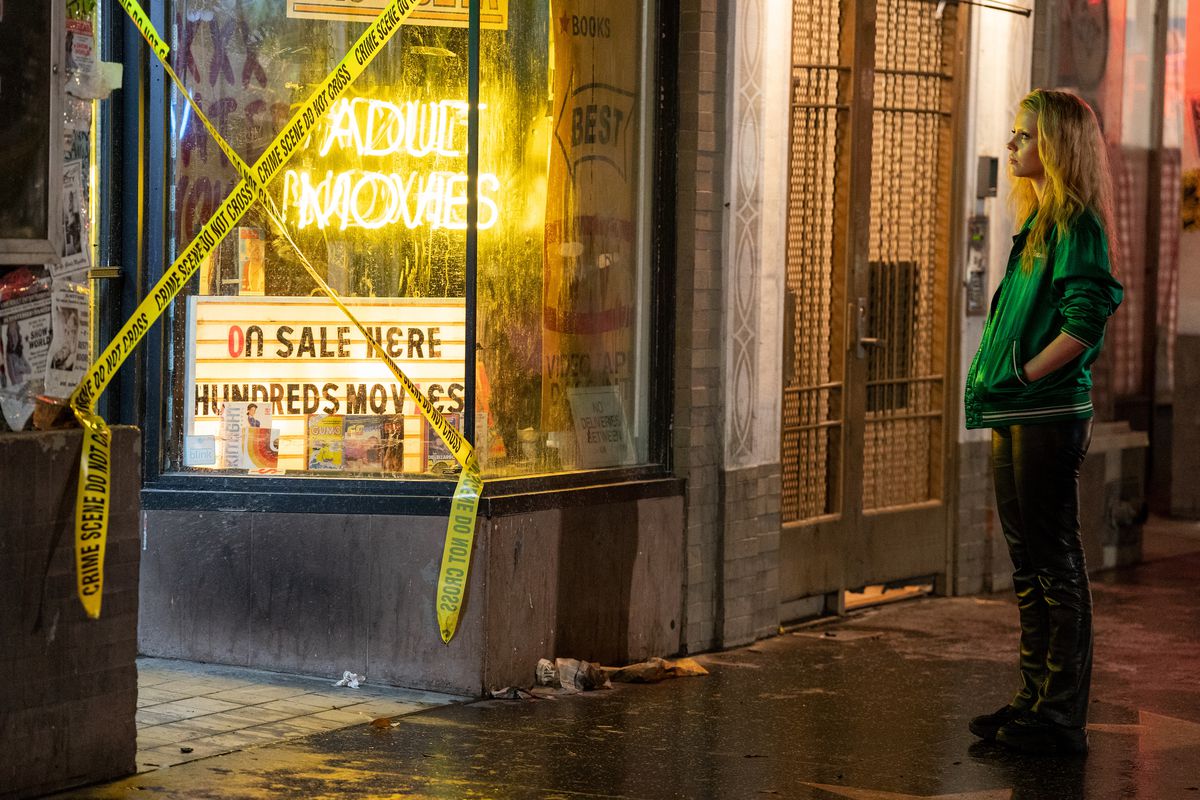Maxxxine is not just an ode to exploitation thrillers, it is one of them
“We are what we pretend to be, so we should be careful what we pretend to be.” ―Kurt Vonnegut, Mother’s Night
Ti West’s Maxxinethe third film in the horror trilogy that the West began in 2022 X And Pearlcontains an early scene in which a man’s naked scrotum is graphically crushed under a stiletto heel and then crushed underfoot. It’s a close-up shot, executed with presumably practical effects and writhing anatomical specificity. There’s a lot of screaming, of course. It’s the kind of shot designed to make the audience squirm, recoil, cross their legs protectively — and possibly laugh, because it’s so grotesquely over-the-top. And it’s the kind of moment that makes thoughtful genre fans wonder where the line is between exploitation homage and straight-up exploitation.
Maxxine is a film full of references, such as X And Pearl before. All three films are homages to earlier eras of cinema: Xset in 1979, is a visual and narrative throwback to the slashers of the 70s, particularly The Texas Chainsaw Massacre. Pearlset in 1918, is based on classic 1950s musicals and Disney films. And Maxxine, Set in 1985, the film borrows many of its visual and narrative cues from 1980s horror thrillers, particularly those of Brian De Palma. Doppelgangeralthough sex-soaked revenge dramas like those of Abel Ferrara Mrs 45 also receive their approval.
Photo: Justin Lubin/A24
But where X is more interested in characters and the philosophies of fame, sex and pornography than in films like Texas Chainsaw MassacreAnd Pearl is not a musical or a family film, there is no significant distance between Maxxine and the kind of seedy, sloppy, violent films it references. (Although there’s a world of difference between this film and Alfred Hitchcock’s Psychowhich West repeatedly quotes in his shots and sets throughout the trilogy.) The film does not come across as ironic, satirical or as a thoughtful analysis or commentary. It is the first of the three that could actually be considered a newcomer to the genre it refers to.
That change is not a positive step. Maxxine is sharper, slicker, faster, and more direct than the other two films in the series, and it’s certainly entertaining, for those who can stomach the deliberately provocative, boundary-pushing gore. But this time around, it feels as if West has, as Kurt Vonnegut would say, become what he once only pretended to be. That’s not just a matter of taxonomy, irrelevant to anyone but nitpickers and librarians trying to figure out which shelf Maxxine continues. It affects the story in a number of frustrating ways.
This chapter of the story takes place X Survivor Maxine Minx (Mia Goth, the trilogy’s host) lives in Hollywood, works in adult films and a strip club while auditioning for studio movies and trying to break into the mainstream. She gets that chance from director Elizabeth Bender (Elizabeth Debicki, who looks more like a Robert Palmer Girl than ever), an iconoclastic director whose horror film The Puritan has given her a chance at a breakthrough in a bigger budget film Puritan IIMaxine is cast in the lead role, but her big moment is threatened by a series of distractions, some of which could end both her life and her career.

Photo: Dons Lens/A24
There is a local serial killer at work, known as the Night Stalker, who preys on young, attractive women like Maxine. The uncle-like, slimy Detective John Labat (Kevin Bacon, who devours all the scenery within reach and makes it look delicious) attempts to blackmail her on behalf of a hidden client, threatening to rat her out to the Texas police as the only person who knows what happened during the events of X. As cold and confident as Maxine seems, she’s suffering from PTSD after those events and is having devastating flashbacks. And a pair of LA cops (Bobby Cannavale and Michelle Monaghan) are hot on her trail, too, suspecting she knows something about how two of her colleagues were tortured, branded with pentacles, murdered and dumped in a local pond.
The plotline of The Night Stalker was inspired by a notorious rapist and murderer in real lifeand the detail of the torture victims being dumped in public is reminiscent of one of Los Angeles’ most horrific and memorable crimes, the Murder on Black Dahlia. But the visual and narrative treatment of all these threads is pure exploitation film. The story certainly contains its fair share of male violence, from that rape-revenge-movie moment with the pierced scrotum to a few memorably gruesome deaths. But Maxxine spends far more time on women being threatened, victimized, and commodified, being stalked, spied on, and judged by male predators, being tied up, tortured, and left naked in public.
It’s all familiar enough material that it flows together, no matter how abruptly and aggressively West cuts between his close-ups of tortured female corpses. What makes it a story is Maxine’s reaction to living in this kind of oversexed, raw environment — and Maxxine often lets her down. West paints her as a ruthless, ferocious survivor willing to do anything for fame, but then repeatedly takes her fate out of his hands and gives it to others. He gives her a hint of vulnerability with those flashbacks to her past traumas, but he casually drops that part of the story once it’s been useful to inject a few sudden shocks into the film.

Photo: Justin Lubin/A24
Above all, Maxxine never really fills in the gaps that would make Maxine anything more than a focal point for various kinds of lurid violence. She doesn’t escape her problems by making particularly clever or surprising choices. She confronts the film’s ultimate predator, but in a way that only reveals more information about him, not about her. The film’s climax sidelines her. And the buildup to that climax is full of sequences that are meant to feel cool or edgy or scary or suspenseful in their own right, but without feeling like they’re part of an evolution or progression. Things happen to and around Maxine — terrifying, disgusting, exploitative things — but the screenplay seems more interested in those in those things than in her.
X And Pearl Both have their flaws, but they also both let Goth’s characters (Maxine in the first case, the previously obsessive fame-seeker Pearl in the second) tell you at length who they are and what they want. In both cases, those sequences are sickening, fascinating, and memorable. And they’re part of what sells this trilogy, alongside the memorable splashes of graphic violence and the strange, dark humor that permeates all three films. Maxxine literally shuts Goth up at a crucial moment, allowing West to focus more on the bloody chaos than on what she herself has to say.
And that leaves Maxxine feels unbalanced compared to the other two films, as if it’s not so much about the lead character as it is about how much sleazy grotesque West can pile on the screen. It’s more focused on satisfying the audience’s presumed hunger for sex, blood, and violation than on fulfilling any specific plot line for Maxine herself. That kind of focus on transgression and titillation defined the films West is channeling this time around. But so far, this series has simply felt like West was nodding to his influences while still fulfilling his own discrete goals. With Maxxineit seems more like he’s trying to replace them, without bringing anything new to the market except better effects and a bigger budget.
Maxxine will be in theaters from July 5.
